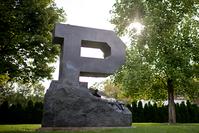2021-03-01 13:00:00 2021-03-01 14:00:00 America/Indiana/Indianapolis Data Science Approaches on Brain Connectivity: Communication Dynamics and Fingerprint Gradients Uttara Tipnis, Ph.D. Candidate https://purdue-edu.zoom.us/j/3266242692
Data Science Approaches on Brain Connectivity: Communication Dynamics and Fingerprint Gradients
| Event Date: | March 1, 2021 |
|---|---|
| Sponsor: | Dr. Joaquín Goñi |
| Sponsor URL: | https://engineering.purdue.edu/IE/people/ptProfile?resource_id=126302 |
| Time: | 1:00 PM EST |
| Location: | https://purdue-edu.zoom.us/j/3266242692 |
| Contact Name: | Anita Park |
| Contact Email: | apark@purdue.edu |
| Priority: | No |
| School or Program: | Industrial Engineering |
| College Calendar: | Show |
ABSTRACT
The innovations in Magnetic Resonance Imaging (MRI) in the recent decades have given rise to large open-source datasets. MRI affords researchers the ability to look at both structure and function of the human brain. This dissertation will make use of one of these large open-source datasets, the Human Connectome Project (HCP), to study the structural and functional connectivity in the brain.
Communication processes within the human brain at different cognitive states are neither well understood nor completely characterized. We assess communication processes in the human connectome using ant colony-inspired cooperative learning algorithm, starting from a source with no a priori information about the network topology, and cooperatively searching for the target through a pheromone-inspired model. This framework relies on two parameters, namely pheromone and edge perception, to define the cognizance and subsequent behaviour of the ants on the network and the communication processes happening between source and target. Simulations with different configurations allow the identification of path-ensembles that are involved in the communication between node pairs. In order to assess the different communication regimes displayed on the simulations and their associations with functional connectivity, we introduce two network measurements, effective path-length and arrival rate. These measurements are tested as individual and combined descriptors of functional connectivity during different tasks. Finally, different communication regimes are found in different specialized functional networks. This framework may be used as a test-bed for different communication regimes on top of an underlying topology.
The assessment of brain fingerprints has emerged in the recent years as an important tool to study individual differences. Studies so far have mainly focused on connectivity fingerprints between different brain scans of the same individual. We extend the concept of brain connectivity fingerprints beyond test/retest and assess fingerprint gradients in young adults by developing an extension of the differential identifiability framework. To do so, we look at the similarity between not only the multiple scans of an individual (subject fingerprint), but also between the scans of monozygotic and dizygotic twins (twin fingerprint). We have carried out this analysis on the 8 fMRI conditions present in the Human Connectome Project -- Young Adult dataset, which we processed into functional connectomes (FCs) and timeseries parcellated according to the Schaefer Atlas scheme, which has multiple levels of resolution. Our differential identifiability results show that the fingerprint gradients based on genetic and environmental similarities are indeed present when comparing FCs for all parcellations and fMRI conditions. Importantly, only when assessing optimally reconstructed FCs, we fully uncover fingerprints present in higher resolution atlases. We also study the effect of scanning length on subject fingerprint of resting-state FCs to analyze the effect of scanning length and parcellation. In the pursuit of open science, we have also made available the processed and parcellated FCs and timeseries for all conditions for ~1200 subjects part of the HCP-YA dataset to the scientific community.
Lastly, we have estimated the effect of genetics and environment on the original and optimally reconstructed FC with an ACE model.


